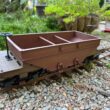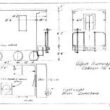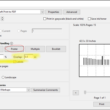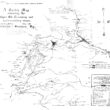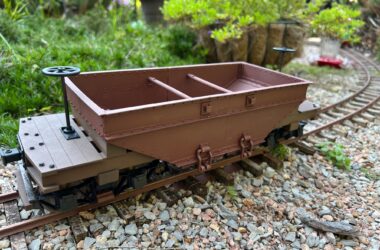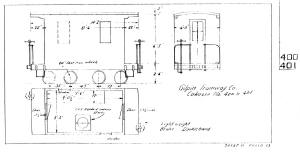How do you decide what scale and gauge to use for modeling two foot gauge railways? This article will describe the various scales and gauges available to use if you want to model two foot gauge railways. Two foot gauge railroads were built in the early days of railroading for two reasons – lower cost and the ability to climb steep grades.
This article is part of a series of articles on how to model the Gilpin Gold Tram which is an iconic 2 foot gauge railway located in Gilpin County Colorado. But there are plenty of other US prototypes (Maine 2-footers, logging railroads, and other mining railways) and many others aroundthe world.
Scale and Gauge
First a bit on the topic of “scale” and “gauge”.
- Scale – This refers to the ratio between the model and the real world. Scale is often expressed in a ratio such as 1:87. This means that one foot in the model world equals 87 feet in the real world.
- Gauge – This refers to the distance between the rails of the track. Gauge for model railroad track is typically measured in millimeters (mm). It is important to remember that track gauge in model railroading has nothing to do with scale.
I picked the scale 1:87 above for a reason – this is the ubiquitous “HO” scale which is arguably the most popular modeling railroading scale. “HO” scale trains run on 16.5 mm track. Why 16.5mm track you might ask? Well, this is the track gauge that represents “standard” gauge railroads. Almost all modern railroads worldwide have adopted the standard gauge of 4 feet 8.5 inches. People will frequently interchange the words “scale” and “gauge”, in other words they might say “HO Scale” or “HO Gauge” but this only works when discussing standard gauge model railroads. What scale and gauge does the narrow gauge modeler use? That is the question we are trying to answer.
For a deep dive into model railroad scales and gauges check out this Wikipedia page.
Narrow Gauge Model Scale and Gauge
So what is the narrow gauge modeler to do? If the popular “scales” are all oriented towards standard gauge railroads where does that leave us narrow gaugers. Well, you have to decide what scale are you going to use to build your models and given that scale what gauge track represents your prototype gauge. For people modeling 3 foot gauge prototypes there are good choices of manufacturers that sell models of the 3 foot prototypes. For example, LGB and others sell models of the Denver and Rio Grande engines and cars that run on gauge 1 track. Two foot gauge prototypes are not so well represented by manufacturers so this is primarily a scratch builders game.
Scale and Gauge for Two Foot Railways
The following chart shows the scale and gauge combinations that are used by modelers for 2 foot gauge railways.
| Scale Name | Ratio | Scale Factor | Track Gauge |
| 7/8 | 1:13.7 | 0.072916 | G – 45mm |
| 16mm | 1:19.1 | 0.052493 | O – 32 mm |
| Fn2 | 1:20.3 | 0.0492 | O – 32 mm |
| On30 | 1:48 | 0.02083 | HO – 16.5mm |
| On2 | 1:48 | 0.02083 | Custom – .5 Inch |
| Sn2 | 1:64 | 0.015625 | Custom – 9.525 mm |
| HOn30 | 1:87.1 | 0.01148 | N – 8.97mm |
Comments on each of the choices shown above:
“7/8” – This is a scratch builders scale that was created specifically to model 2 foot gauge railways using the popular “G” gauge track (45mm). This is my preferred choice for modeling the Gilpin Gold Tram.
“16mm” – This is a popular scale in the U.K. and represents 2 foot gauge on 32 mm track.
Fn2 – This is the American version that uses 32 mm track for 2 foot gauge but the scale is slightly different.
On30 – This is O scale models running on HO track which represents 30″ gauge track but that’s close enough to 2 foot for it to work. On30 is popular as there are manufacturers in this scale/gauge.
On2 – This is O scale models running on custom track work. The track gauge is .5 inch which is a true 2 foot gauge rather than On30 that represents 30″ track. There are a handful of vendors but you would be hand-laying track and scratch building for the most part.
Sn2 – This is “S” scale models running on a custom gauge track (9.5mm) so you have a popular scale but there are no commercial track components.
HOn30 – This is HO scale models running on N gauge track which represents 30″ gauge track. I included this because it’s there but I’m not sure there is much activity in this scale/gauge combination.
Which Scale/Gauge To Use For Modeling Two Foot Gauge Railways
So which scale/gauge combination should you use? My preference is “7/8” scale because it runs on 45mm track which is very popular and there are some vendors that provide detail parts, car kits, and live steam engines. On the other hand, since I’m modeling the Gilpin Gold Tram this is entirely a scratch building effort so vendors aren’t that big an issue.
There is one consideration that might convince me to switch to 16mm or Fn2. The Gilpin Gold Tram had some dual gauge trackage to handle interchange with the Colorado Central which was a 3 foot gauge railroad. This would easily be modeled using off the shelf Colorado Central engines/cars running on 45mm (“G” Gauge) track.
Of course, the smaller scales have the advantage of squeezing more railroad into a smaller space so that is a consideration as well.

